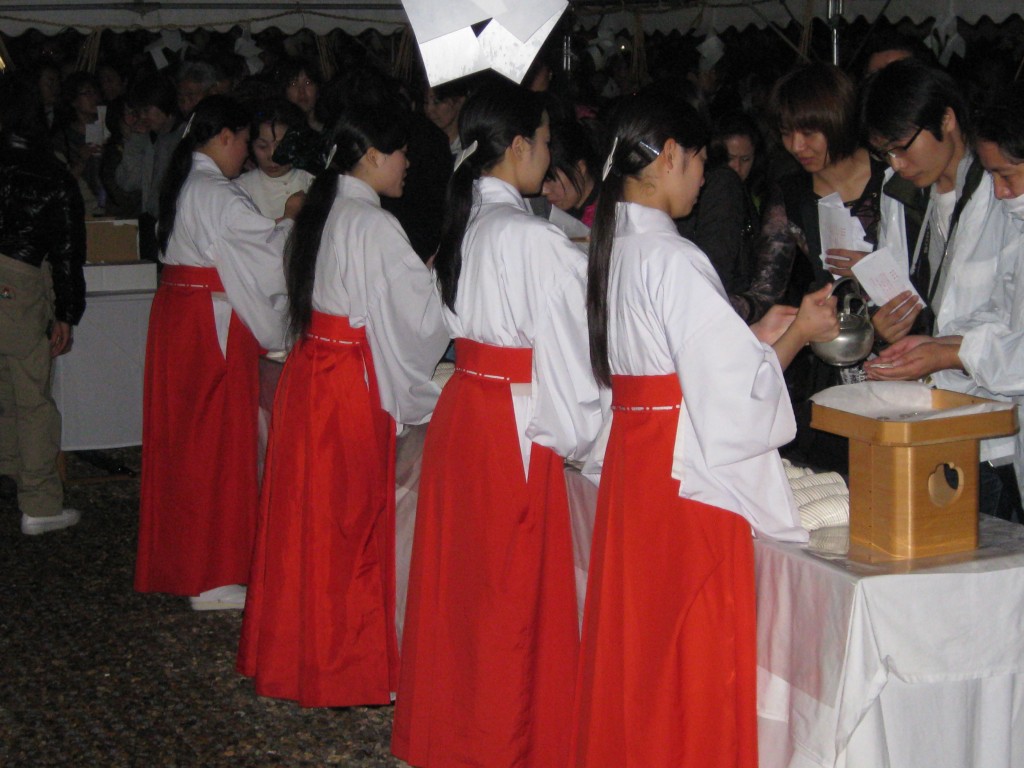
Miko (shrine maidens) administering omiki (sacred saké) to the throng
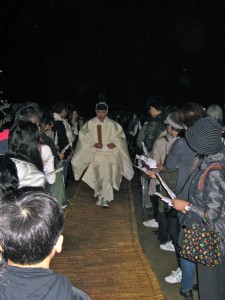
Priest leading the procession at the Welcome Ceremony
Kami visitors
The best time to visit Izumo is when all the kami of Japan go. That’s in the tenth month of the old lunar calendar (the dates vary in the modern calendar but are around this time of year). You can expect it to be crowded, with the eight myriad kami joined by several thousand Japanese. Such is the size of Izumo, though, there’s plenty of room – except for the immediate access roads which get pretty jammed.
The kami stay at Izumo shrine for a week, after which they circulate around eight other shrines in the area before taking their leave. This year I attended the first two days of the event, and I’ve described the Welcome Ceremony on the beach here. Outdoors and in the dark, it has a sense of theatre as the kami emerge from the sea and into the waiting branches (himorogi).
Honoring the snake
The day after the Welcome Ceremony I turned up at the shrine and found a line of people queueing before a small tent, where they were paying respects to Ryuja-san, the serpent-spirit who guides the kami as they arrive by sea. What looked like a model snake sat in a mikoshi, and people filed past and prayed. Some were quite fervent.
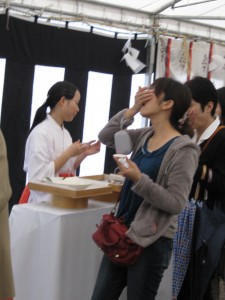
Scoffing the rice grains, with saké cup-saucer in hand
Coming from a Christian background, where the snake has been demonised, it’s striking to see a serpent the focus of so much devotion. We tend to think of it as a vile, poisonous creature. Here, however, because of its skin-shedding ability, it’s seen rather as a symbol of regeneration.
At the exit to the tent miko were serving saké and a few grains of rice. Watching people eat and drink, I couldn’t help thinking that here was the Shinto equivalent of Holy Communion. Rice wine instead of red; rice grain instead of wheat. Ingesting spirit and the body of the earth. Participating in the divine.
Networking
The kami had already got up by the time we arrived, and according to the priest I asked they had gone down to hold a conference at somewhere called Kaminomiya (or Karinomiya). It was about fifteen minutes walk away, near the beach on which the Welcome Ceremony was held.
The road leads past the grave of Izumo no Okuni, famous to us who live in Kyoto as the founder of kabuki. She is thought to have been a shrine dancer at Izumo, who went to Kyoto to seek her luck as a performer. She invented a whole new crazy style of dance-drama. She made a name for herself then, like Shakespeare, returned to her home town to die.
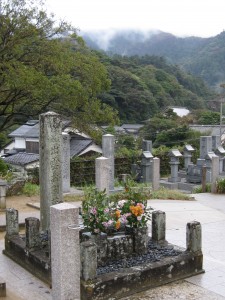
Okuni's grave, founder of kabuki, with the characteristic hills and mists of her Izumo childhood behind
There’a statue of Okuni in Kyoto that I pass every day on my way to work. It stands by the Kamogawa river, where she held performances around 1600 on the dry river bed, and shows her dressed as a samurai and aping the mannerism of a man. From sacred dance to crazy spirit, she lies now where every year she gets a chance to see all the kami of Japan pass by. Here’s to you, Okuni !
Conference hall
You’d imagine a conference hall for eight myriad kami – the assembled deities of the nation – to be an immensely grand affair. Far from it. It turned out, in fact, to be an unprepossessing shrine of seemingly little distinction. A solitary priest sat at the entrance, dispensing the same saké and rice grains combination as at the Ryuja-san tent.
Prayers of respect were done in front of the worship hall, whose doors stood open. There was nothing to see within but a few coins offered by visitors. I thought perhaps the kami might be assembled there, invisible to the human eye, but the priest assured me they were behind closed doors inside the honden (inner sanctuary), where kami usually reside.
What were the kami discussing, I asked the priest. ‘Mm,’ he said thoughtfully, then added something to the effect that it was not for us to know. I can guess, though, that high on the agenda this year was the little matter of Fukushima.
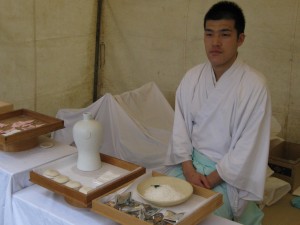
Priest with saké and rice grains to dispense to visitors
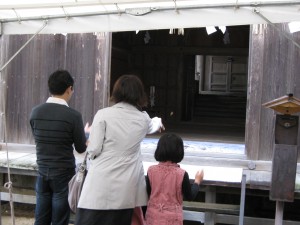
- Offering coins at Kaminomiya where the kami of all Japan are gathered in discussion
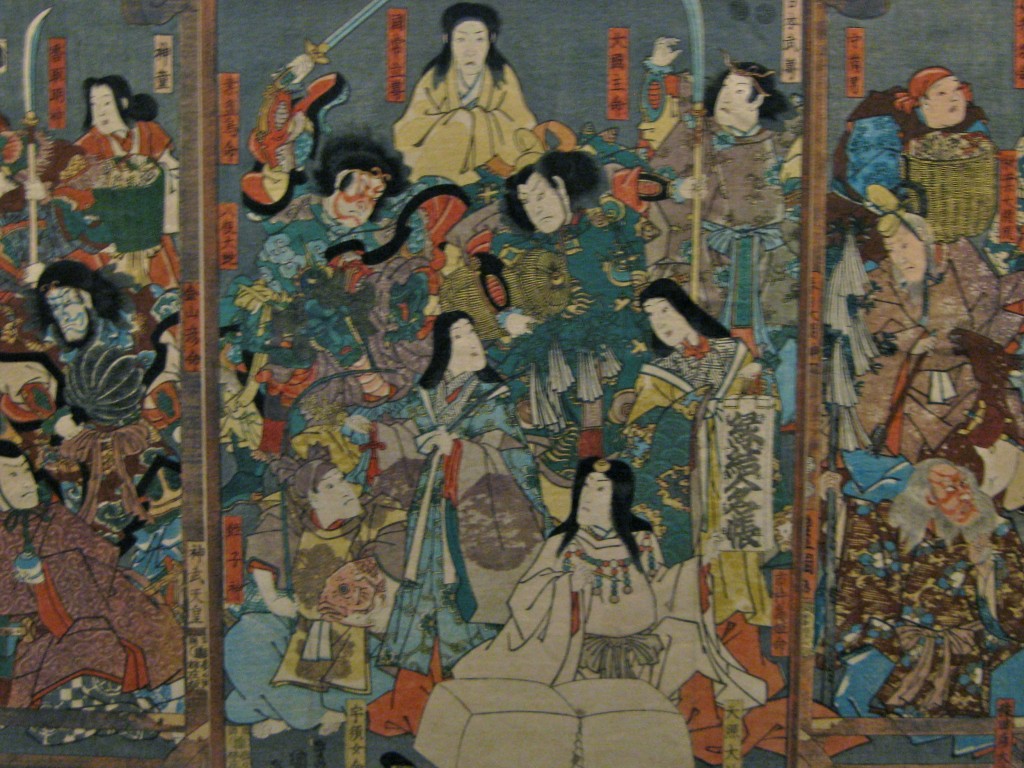
Edo-era depiction of the kami in conference

Leave a Reply